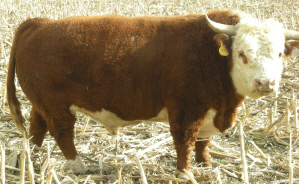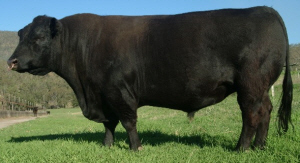



Speckle Park
History
In 1937 Mary Lindsay, daughter of a beef farmer of Greenstreet Northern Saskatchewan, Canada, spotted a uniquely coloured speckled red roan heifer in her fathers herd. The unique colour pattern impressed her and she subsequently bought the heifer from her dad.She found regardless of the breed of sire she bred the cow to it always produced calves with that colour pattern. It is believed that the heifer was a descendent of a Teeswater Shorthorn which carried the White Park gene as well.
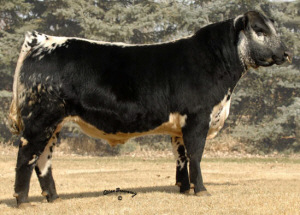 Photo courtesy of Speckle Park Cattle Co., www.specklepark.com.au |
In 1959, Eileen and Bill Lamont (Angus breeders from Maidstone, SK), became interested in Mary's speckled cattle, bought their first speckled heifer. It was to lead to the development of what is now known as the Speckle Park cattle breed. The Lamonts crossed their "speckled" cows with superior registered Black Angus bulls in the late 50's and early 60's. The resulting offspring came in a variety of colour patterns, white with black points, some leopard coloured (spotted on their sides) and some black sided with speckled hips, white top and underline and roan faces.
Over time the Lamonts breeding work created high quality carcass cattle, light birth weights with the speckled colouring. They decided to name their cattle Speckle Park cattle. Other beef cattle breeders saw them come through the cattle markets and bringing a premium price. Their interest grew in these hardy, heavy milking and distinctly marked cattle to the stage they started purchasing bulls and females from the Lamonts to try them in their herds. Within a few years a dedicated group of breeders were now breeding Speckle Park cattle, mainly from the Nielburg area of northern Saskatchewan.
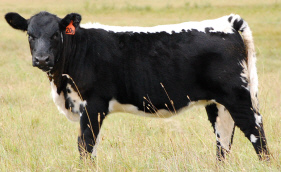 Photo courtesy of Legacy Speckle Park, www.legacyspecklepark.com |
On June 4 1993, Agriculture Canada approved the incorporation of the Canadian Speckled Park Association and were declared an evolving breed of cattle. February 14th 1995 saw the Associations first set of by-laws granted by ministerial approval.
History was made on July 6th 2006 when the Minister for Agriculture announced the Speckle Park breed a distinct pure breed, the first and only breed to be developed in Saskatchewan Canada.
Characteristics
Statistics
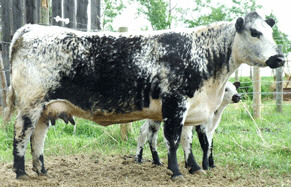 Photo courtesy of Speckle Park Cattle Co., www.specklepark.com.au |
Comparative
Distribution
Today there are over 70 Purebred members and some 3,000 registered cows on the register in Canada alone. In 2007 and 2008 over 700 embryos and 1500 straws of Speckle Park genetics have been exported to Australia, New Zealand, Ireland and Denmark with the first calves due in May 2008.A group of Australians have in 2007 formed the Australian Speckle Park Association and will handle registrations for both Australia and New Zealand. They will also be the first to have a Performance Data Recording system in place for Speckle Parks, with University of New England, Armidale, Australia and the Agricultural Business Research Institute of Australia, which will bring a new and exciting dimension to the breed.
References (the above information was cited from the following sites)
www.specklepark.com.au
www.legacyspecklepark.com
Australian Lowline Cattle were developed from an Aberdeen Angus herd which was established at the Trangie Research Centre in 1929, they were bred to provide quality breeding stock for the NSW cattle industry.
Seed stock were purchased from Scotland, Canada, America and selected Australian Studs to form the foundation of the herd.
The emphasis at Trangie switched to research in 1963, the Australian Meat Research Committee asked the Trangie Research Centre to conduct a project aimed at establishing the role of performance recording in the breeding program of a herd. Emphasis was given to weight gain and to visual conformation score in the selection of replacement bulls and heifers. The project continued until 1970, pioneering performance testing in Australia, and demonstrating successfully the usefulness of measuring performance in a stud herd.
Seed stock were purchased from Scotland, Canada, America and selected Australian Studs to form the foundation of the herd.
The emphasis at Trangie switched to research in 1963, the Australian Meat Research Committee asked the Trangie Research Centre to conduct a project aimed at establishing the role of performance recording in the breeding program of a herd. Emphasis was given to weight gain and to visual conformation score in the selection of replacement bulls and heifers. The project continued until 1970, pioneering performance testing in Australia, and demonstrating successfully the usefulness of measuring performance in a stud herd.

